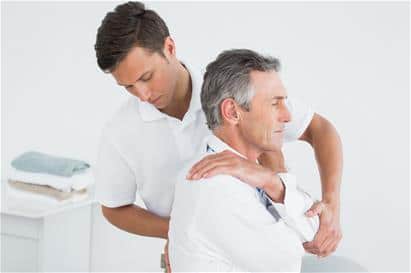
How to Have Great Posture – Part 2
Thinking back to a typical work day 50-60 years ago, it was quite common (and appropriate) to hear someone say “I just want to sit down and relax” after an 8 hour day of whatever “work” was. Funny, you don’t hear that much these days. But, today we still want to help you with your posture, so read on.
In Part 1, I wrote about the current interest in posture and how correcting bad posture is not that difficult. I mentioned The Upper Cross Pattern, the common imbalance associated with poor “upper body” posture. Although the shoulders, neck and upper back are the area’s most think of when discussing posture, there is another pattern that is almost as common. The Lower Cross Pattern, which effects the lower back, pelvis and hips, is a direct result of all the sitting we do (while we drive, use the computer, etc) which of course is what causes the Upper Cross Pattern…it’s all connected!
The lumbar spine (lower back) normally possesses a curvature called a lordosis. When good posture is present, this lordosis positions the lower back in the most stable and functionally advantageous position. This position is crucial for normal biomechanics and to fend of injury and long term structural changes. The pelvis should be in a neutral position; neither tilting forward or backward. Again, this is crucial for good biomechanics.
When we sit for long periods of time we over utilize certain muscle groups, causing them to become too short and too tight/strong. At the same time we underutilize other muscle groups causing them to become too long and to loose/weak. This imbalance, in turn causes a change in both the curvature of your spine and the position of your pelvis. Ultimately this leads to wide spread biomechanical dysfunction and pain.
As I mentioned in Part 1 of this blog, the simple fact is that there are very common patterns of muscle imbalance that lead to most people’s bad posture (and related pain). The Upper and Lower Cross Patterns are present in just about everyone to some degree. Every day at our office we identify these imbalances and incorporate very specific plans to correct them. This plan typically includes joint mobilization techniques, various forms of massage and of course of very specific routine of exercises.
Whether the motivation is less pain, better athletic performance, improved confidence or the prevention of degenerative changes later in life, the approach is all the same. Contact Nava Center today for more information.

A Medical Director, and one of the first physicians to join the Nava Health & Vitality Center, Dr. Douglas Lord has made significant contributions to our Center and its founding principles. Dr. Lord has helped develop and implement the Nava Method™—Nava’s proprietary approach to total body wellness. He has also been instrumental in liaising with other expert practitioners to successfully implement Nava’s range of therapies, treatments, and products.